What if there is an India-Pakistan nuclear war?
A new study reveals what could trigger a nuclear war in the subcontinent and the horrors of the day after
 Madhavankutty Pillai
Madhavankutty Pillai
 Madhavankutty Pillai
Madhavankutty Pillai
 |
01 Nov, 2019
|
01 Nov, 2019
/wp-content/uploads/2019/10/Nukewar1.jpg)
(Illustration: Saurabh Singh)
IT WAS IN THE EARLY 1980s THAT ATMOSPHERIC SCIENTIST Brian Toon, now Professor in the Department of Atmospheric and Oceanic Sciences, University of Colorado at Boulder, US, got interested in the fallout of nuclear wars. He arrived at it strangely through the study of dust on Mars and the asteroid impact that wiped out dinosaurs on earth. A paper he was part of at the time, ‘A one-dimensional radiative-convective model’, was instrumental in showing how dust released from massive explosions would affect sunlight entering the earth (astronomer and science populariser Carl Sagan was another co-author). The term ‘nuclear winter’, a vision of the holocaust’s doomsday laying the earth bone bare, soon caught the imagination of a world in which the US and the Soviet Union were stockpiling thousands of nuclear weapons. A February 2018 New Yorker magazine story on the development of global warming science had an allusion to this study noting, ‘Atmospheric scientists were well-placed to take up the question of smoke from a nuclear war… Richard Turco and others, working on the dinosaur extinction problem, had developed a computer model of a haze-filled atmosphere, and it had occurred to them that dust lofted by the explosions of a nuclear world war might have effects comparable to the dust from an asteroid impact. Meanwhile, the surprising observation that a giant dust storm was cooling the atmosphere of Mars had inspired two more scientists, James Pollack and Brian Toon, into new calculations of dust effects. This led them into work with Carl Sagan on how the aerosols emitted by volcanic eruptions could affect climate. Now these scattered scientists joined forces to calculate the consequences of an exchange of hydrogen bombs. Their ominous conclusion was that the sooty smoke from burning cities could bring on a ‘nuclear winter’—months or even years of cold so severe it would gravely endanger living creatures.’
But by the end of that decade, the fear had begun to wane, largely because the nuclear policies of the superpowers were changing. In 1986, Ronald Reagan and Mikhail Gorbachev decided they would build down these weapons. By the beginning of the 1990s, countries like South Africa that were keen on nuclear weapons had dropped their plans. When the Soviet Union fell, Ukraine and Kazakhstan gave them back to Russia. “There was a decrease in nuclear activity throughout the world. After the Soviet Union disintegrated, people stopped worrying about a global war,” says Toon.
But then late 1990s onwards, two countries—India and Pakistan—began to belie that trend, first testing nuclear weapons and then building their arsenal. Simultaneously, tensions between them increased, with a border war and repeated terrorist attacks on India from Pakistan-based groups. Once again, scientists began to be interested in the potential fallout of a nuclear war, this time in the subcontinent. In a just published paper in the journal Science Advances, Toon and researchers across multiple disciplines showed in graphic detail what would happen if India and Pakistan engaged in a nuclear war and it is not a happy picture.
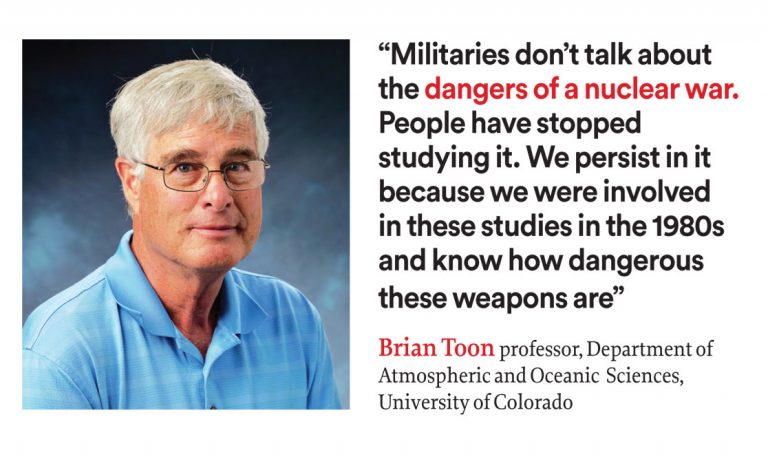
Over the course of a week, they calculated that between 50 million and 125 million people could die. And while the two countries would be crippled with unimaginable devastation, the world itself would sink. For 10 years at least, because of sunlight trapped by smoke and soot released into the atmosphere, the earth would cool, rainfall reduce, crops fail in almost all countries and there would be mass starvation. It would take a decade for conditions to reverse.
Toon’s paper, ‘Rapidly expanding nuclear arsenals in Pakistan and India portend regional and global catastrophe’, looked at how such a war would be triggered. For a likely scenario, they borrowed from the 2001 terrorist attack on India’s Parliament following which India had deployed 500,000 troops on the border and Pakistan responded with 300,000, bringing these massive armies into an eyeball-to-eyeball confrontation. Missiles and armoured units were also deployed on the border then and there were numerous reports later about how dangerously close war had been. It would take almost a year for tensions to ease.
The scenario that Toon’s paper makes is similar, except that this time things really go in the direction it is headed. They drew on a 2003 paper published in Strategic Insights titled ‘The Risk of Inadvertent Nuclear Use Between India and Pakistan’. Authored by Peter R Lavoy and Major Stephen A Smith, it had three possible routes to the use of nuclear weapons between the two countries. The first was ‘Survivability at Risk’ in which India’s superiority in conventional forces threatens Pakistan’s nuclear arsenal and the only choice they have is to either ‘use them or lose them’. The second is Pakistan’s or India’s leadership loses command and control, and individual commanders make the decision to launch nuclear weapons. And the third is either country launching a pre-emptive nuclear strike under the mistaken impression that the other is about do so. ‘India and Pakistan do not want war; and they certainly do not want to fight a nuclear war. As strong as this desire is, however, New Delhi and Islamabad are caught in a spiral of tension and mistrust that could cause the next regional crisis to flare into armed conflict,’ said Lavoy and Smith’s paper.
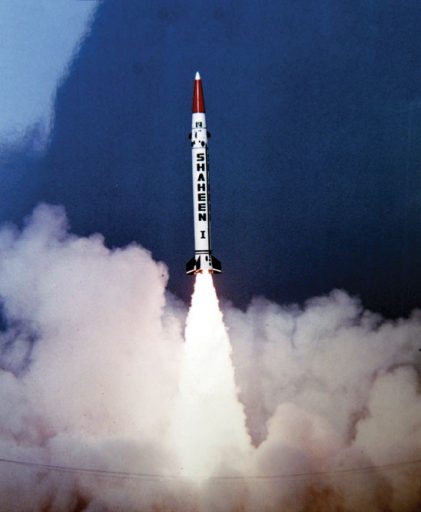
In Toon’s paper, a terrorist attack on India in 2025 kills a large number at the top of the Indian Government. ‘As happened in January 2002, we assume that India and Pakistan mobilise their troops within a few weeks of the terrorist attack. Indian troops would likely be dispersed along the border and in Kashmir. Skirmishes would break out, resulting in deaths on both sides. Similar skirmishes happened in 2002 and now occur with regularity, most recently, with a conflict in the Kashmir region beginning with a terrorist event on 14 February 2019. In the 2002 confrontation, the United States, Russia, and other countries intervened, eventually convincing India and Pakistan to end the confrontation, which had continued into the summer of 2002 until Pakistan agreed to control terrorist groups within its borders,’ says the paper.
But this time, because of the consequence and anger from so many of the top Indian leadership being killed, no such intervention helps and the Indian Army then crosses across the Line of Control with tanks.
Toon says, “We had a meeting with a bunch of experts, including a retired Pakistani Brigadier General who had been involved in war games, to look at how nuclear conflict might develop. The Indian military is about twice as large as the Pakistani military. Pakistan is geographically small, and in population too. And so, if they eventually antagonise India enough, you can imagine India moving tanks and troops to the border, which it did in 2002. From the point of view of India, Pakistan isn’t a big threat. They can certainly attack India, but they’re not going to overrun it. India is just too big. Whereas Pakistan is small and India could overrun Pakistan. If you’re a Pakistani general, you could think they are going to overrun me immediately and so I’m going to use my nuclear weapons before they are lost.”
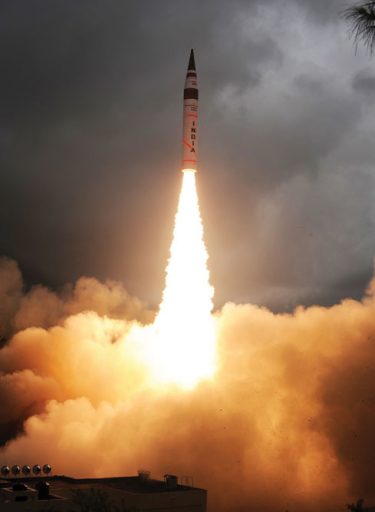
A key reason why a nuclear war could be triggered is Pakistan having developed tactical nuclear weapons, small warheads that it has said will be used if necessary. Just last month, a Pakistani minister, Sheikh Rasheed Ahmad, said their nuclear weapons were as small as 125-250 g. “There are a lot of military thinkers who for some reason think, ‘If you use a tactical nuclear weapon, that would be different than using a strategic nuclear weapon [the larger variants].’ I don’t know why they think that. If a nuclear weapon is used, it is used and the other side is going to respond. In our scenario, the Pakistanis attack the invading Indian tanks with tactical weapons, and then the whole thing escalates from there. And that was a scenario, more or less, that happened in war games.”
IN 2025, AFTER Indian tanks move into Pakistan in the scenario, on the first day, the paper says, Pakistan would retaliate using ‘10 tactical atomic bombs with 5-kt yield inside its own borders with low air bursts against the Indian tanks’. The next day, they use 15 more such nuclear weapons and India retaliates dropping two nuclear bombs on a Pakistani garrison in Bahwalpur and then ‘deploys 18 other weapons to attack Pakistani airfields and nuclear weapons depots, partially degrading Pakistani retaliatory capabilities’.
On Day 3, ‘Pakistan responds with a barrage of nuclear ballistic and cruise missiles on garrisons, weapon depots, naval bases, and airfields in 30 locations in Indian cities… India also uses 10 strategic weapons against Pakistani military bases.’ From Day 4 to 7, Indian cities are hit with 120 nuclear weapons, Pakistan with 70.
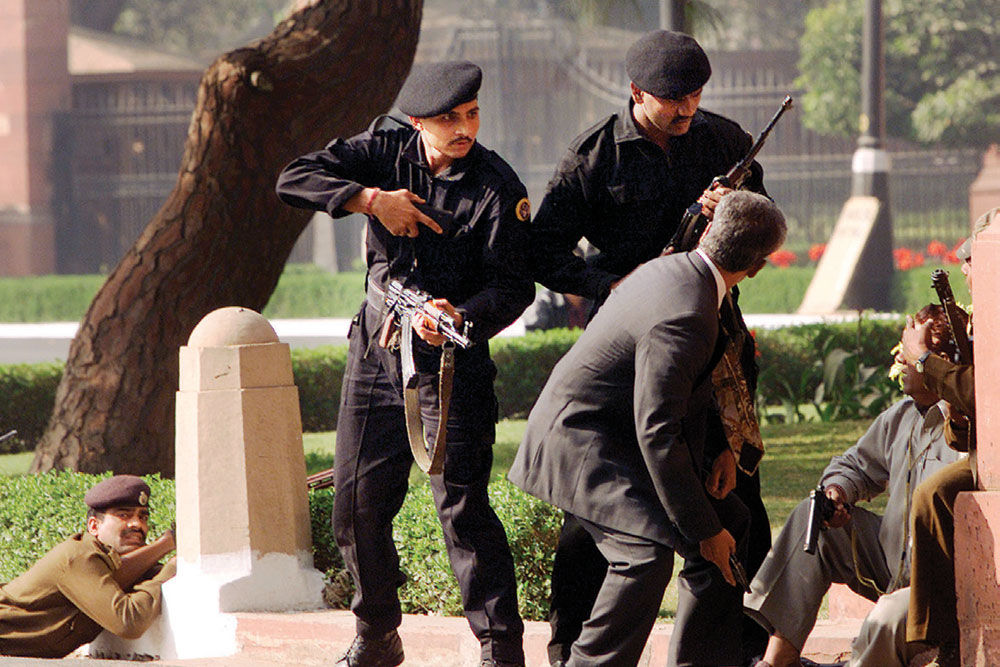
‘In total, Pakistan’s urban areas are hit with 100 nuclear weapons using air bursts, and India’s urban areas are hit with 150 nuclear weapons using air bursts. In addition, Pakistan has used 40 tactical nuclear weapons successfully and 20 strategic weapons successfully on targets not in urban areas, whereas India has used 25 strategic weapons successfully on targets not in urban areas,’ says the paper.
At the end of it, between 50 million and 125 million people would be dead within seven days. To arrive at the number, the research team looked at likely targets in India and Pakistan based on population. They identified 150 such urban areas in India and 100 in Pakistan that would be targeted. “India has 450 cities with more than 100,000 people. We assumed one-third of them were bombed. And we assumed in Pakistan, basically, every city bigger than 100,000 was bombed twice,” he says. More people are killed in India because it has 10 times Pakistan’s population. But as a fraction of total population, more die in Pakistan.
It was also assumed looking at the population databases that nuclear weapons would be dropped in the most populated parts of these cities. “It’s not very hard to calculate how many people would probably get killed and injured. There have been 500 above-ground nuclear weapons tests. And there was Hiroshima and Nagasaki. And we know a lot about the damage these weapons cause and so you can calculate the fatalities,” says Toon.
Toon illustrates how the devastation will proceed. The shockwave in the immediate vicinity of the explosion is big enough to knock down high-rise buildings. In Hiroshima, an area within about 13 square kilometers was set on fire
The devastation and deaths in India keep increasing with every bomb dropped but in Pakistan it begins to go down after the 50th explosion. This is because there are no more densely populated targets to attack there. “The first 10 bombs that fall in Pakistan are in highly populated areas as against the first 100 in India. You run out of targets in Pakistan because there’s nothing left to attack. If you have 100 nuclear weapons on Pakistan, the last ones are attacking pretty sparsely populated places. Whereas in India, you’re continuing to attack densely populated cities, because there are so many of them,” says Toon.
An aspect of these nuclear attacks is that they would overwhelmingly be air bursts, bombs that explode before touching the ground. The reason for that has to do with the primary intent of nuclear weapons—to blow up cities. This is a continuum to a tactic with conventional weapons in the Second World War. The Allies would send 500 to 1,000 airplanes to an enemy city with bombs the size of a toaster or a loaf of bread that could make a hole in the roof of buildings and explode inside. “They did it to 26 Japanese cities and burned them to the ground. The idea of the atomic bomb was instead of having to have 500 or 1,000 airplanes, you build something so powerful that one airplane could destroy a city. That’s what these bombs are about. They’re about destroying cities,” he says.
The best way for maximum destruction is an air burst because the shockwave goes further and covers a larger area killing more people. And an air burst burns up more of a city. Toon illustrates how the devastation will proceed. The shockwave in the immediate vicinity of the explosion is big enough to knock down high-rise buildings. Within half-a-kilometre of that epicentre, the radiation burst is intense enough to incinerate people who are exposed to it. Further out, the shockwave gets weaker but even up to a kilometre from the blast centre, weak buildings would collapse. And fires would rage longer distances away. “In Hiroshima, an area within about 13 square kilometres was set on fire,” he says.
Because of the intense radiation burst near the explosion, half the people exposed to it would die within a week or two. Then there is the radiation from the material in the fireball. If it’s a small bomb, the material will blow a few kilometres downwind before it falls, leaving a trail that is intensely radioactive. That radiation will dissipate in a few days. “But then there’s a lot of longer-lived isotopes like cesium, for example, that will be in the ground for hundreds of years if it is a ground burst. In the air burst, it blows away by wind and is spread out over a bigger area. But the air burst would kill more because of the fires they would unleash over a larger area. Near to the blast, the shockwave, radiation and fires will all kill but as one goes further out, it is the fires,” says Toon.
He points to pictures of Hiroshima where the ground is covered with rubble. “You would think that was from the bomb blast, but really it’s from the fire. Hurricane force winds are generated. They build a huge column of smoke high into the sky and flames come in from all directions, and everything’s blown into the fire,” he says.
WHEN TOON AND his co-researchers looked at the 2025 scenario, based on what happened in Hiroshima and other conventional World War II bombings of cities, they calculated the quantities of fuel—inflammable material present in the Indian and Pakistani cities attacked—that would be consumed in mass fires making them spread. And from that they arrived at what the smoke emitted would be.
“It’s not hard to calculate how many people are going to die, people pretty much agree on how you do that. The fire damage is more complicated because you have to know over what area did the fire burn, how much fuel is there, how much does the fuel burn. And then the next question is, if you burn all this fuel, how high does it go? We assume the smoke column goes very high into the atmosphere. And once you get high in the atmosphere, it gets carried into the stratosphere. And once it’s in the stratosphere, it’s going to stay there for years, because it doesn’t rain in the stratosphere,” he says.
Their study found that if nuclear weapons with yields of 15 kilotonnes were used, then 16.1 million tonnes—11 from India and 5.1 from Pakistan—of black carbon from smoke is injected into the upper troposphere. If the weapons’ yield is 100 kilotonnes, then 36.6 million tonnes of black carbon enter there.
“Black carbon absorbs sunlight very well. The sun heats it up and in the stratosphere, the temperature goes up by 100 or more degrees centigrade. That creates winds in the stratosphere, distributing the stuff over the whole earth,” he says.
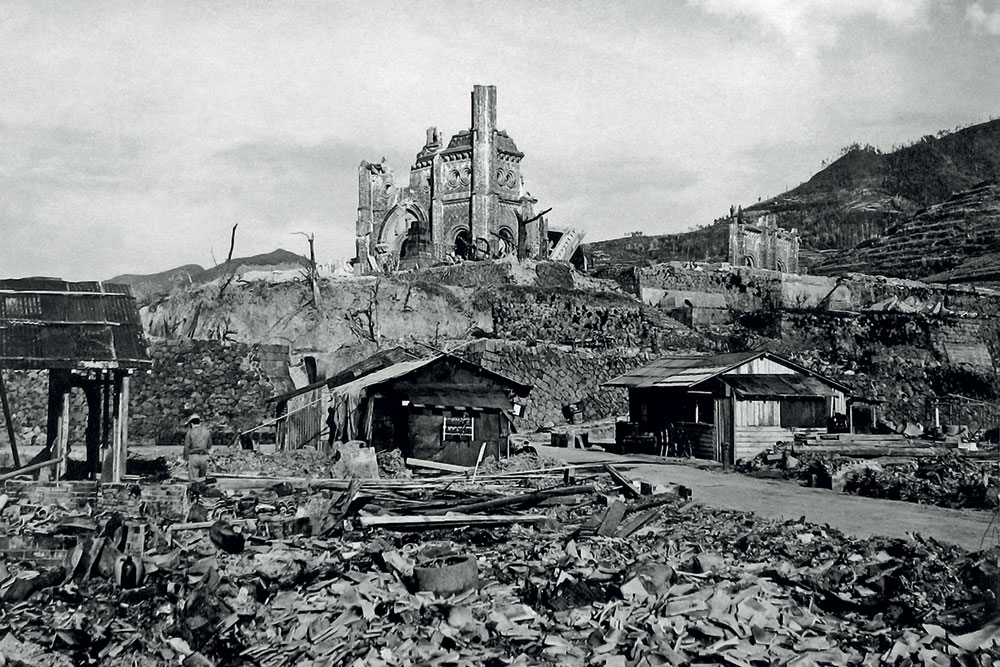
Across the globe, this phenomenon results in reduced sunlight and causes cooling of the ground. Combined with decreased rainfall, crop failure results all over the world. “Cold countries of higher northern latitudes (Russia, Scandinavia, etcetera) are going to lose all their agricultural productivity. As you go a little bit south to the United States or Spain or North Africa, it’s kind of warm there already and the temperatures don’t drop as much. You don’t lose your entire crop, but you still have significant losses of primary productivity. In a few places, productivity goes up, but not many. So this could cause agriculture failure worldwide,” he says.
Net Primary Productivity (NPP) is a measure of how much carbon dioxide is converted by plants into food by photosynthesis, and that comes down drastically. Their calculations found that on the ground, NPP decreases between 15 per cent and 30 per cent, and by 10-20 per cent in the oceans. These numbers would be enough to trigger mass starvation because, says Toon, even now the world has only enough grain in storage to feed itself for about 60 days; when any country faces an acute food shortage, it makes up for the shortfall by getting it from other countries. “When there was a failure of the Russian wheat crop, it drove up prices of bread in North Africa creating political unrest in countries there. These agricultural failures happen all the time. But if somebody has a failure, somebody else usually gets good weather and can compensate. But in this case, everybody’s going to have crop failures. This is likely to lead to mass starvation,” he says. In the study’s model, NPP only recovers after a decade. The world might then slowly limp back to some semblance of order.
In India and Pakistan, it would still be an entirely different story. With 50 million to 125 million dead and many times that number injured, the medical system will be overwhelmed. Political order would collapse. Plus with all of Pakistan’s cities and all the major Indian cities in rubble, rebuilding would be a near impossible task. Another way to appreciate the scale of the devastation is to look at the number of people dying annually in the world ordinarily—50 million. This is the minimum number of deaths from the use of the lowest yielding weapons in a nuclear war between India and Pakistan. Fifty million is also the number of deaths in World War II but that took six years. It would take only a week in the 2025 scenario.
Toon says it is important to conduct such studies because the world has stopped being worried about a nuclear war. In the 1980s, when the Soviet Union and the US were engaged in a nuclear arms race, scientists pointed out what was waiting round the corner and it helped bring about change. With the state of relations between India and Pakistan, awareness again needs to be created.
“Militaries don’t talk about the dangers of a nuclear war. People have stopped studying it. We persist in it because we were involved in these studies in the 1980s and know how dangerous these weapons are. And we want others to know how dangerous they are and not forget about it,” he says.

/wp-content/uploads/2025/07/Cover-Shubman-Gill-1.jpg)





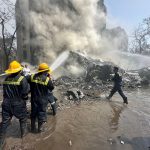






More Columns
‘Fuel to Air India plane was cut off before crash’ Open
Shubhanshu Shukla Return Date Set For July 14 Open
Rhythm Streets Aditya Mani Jha